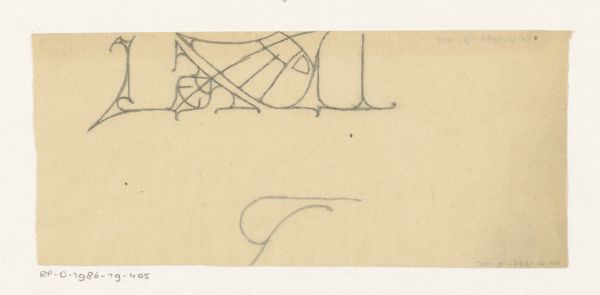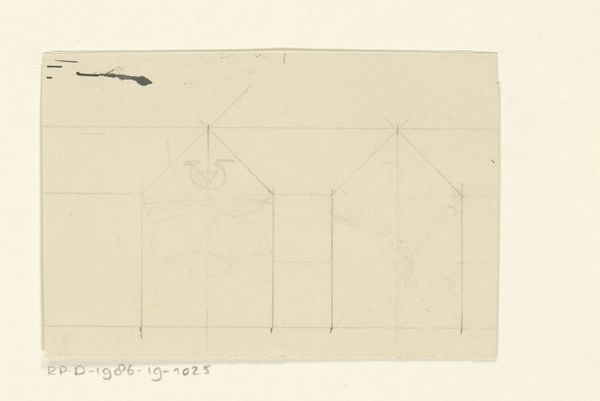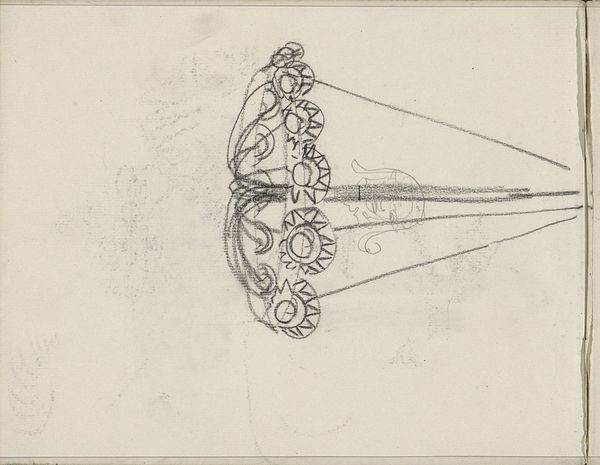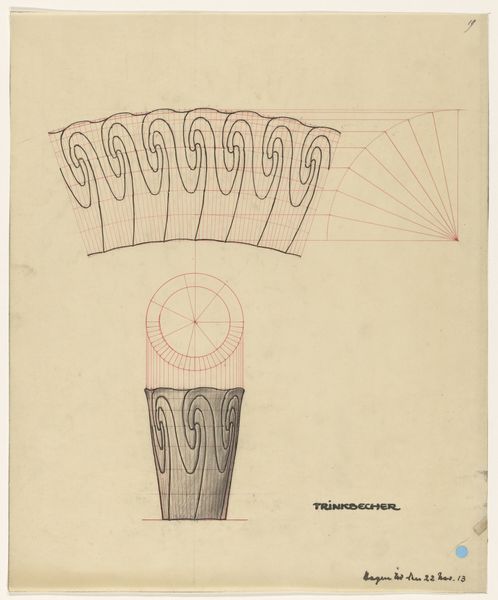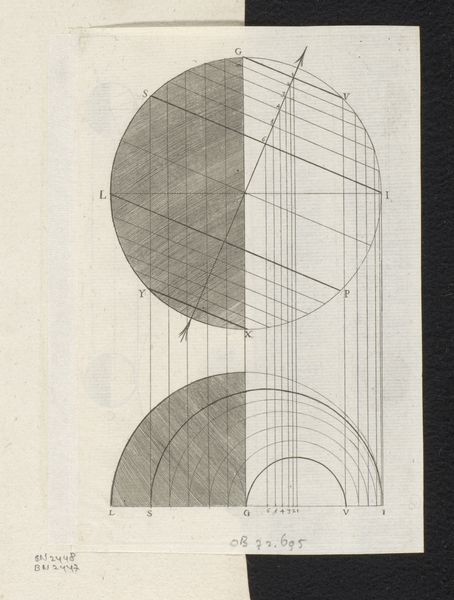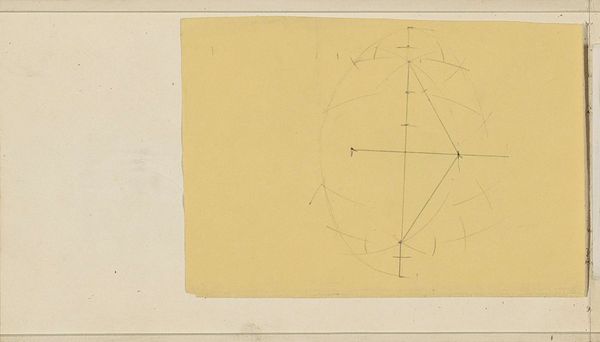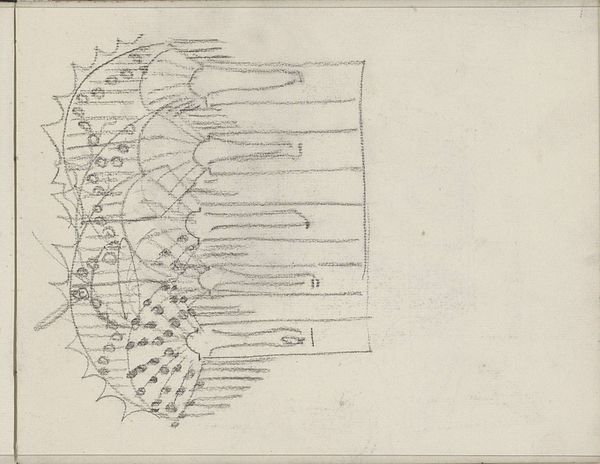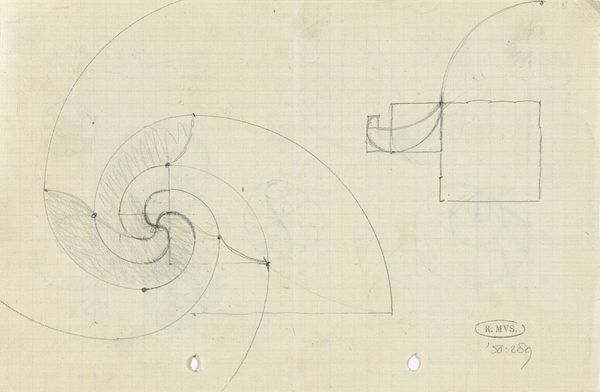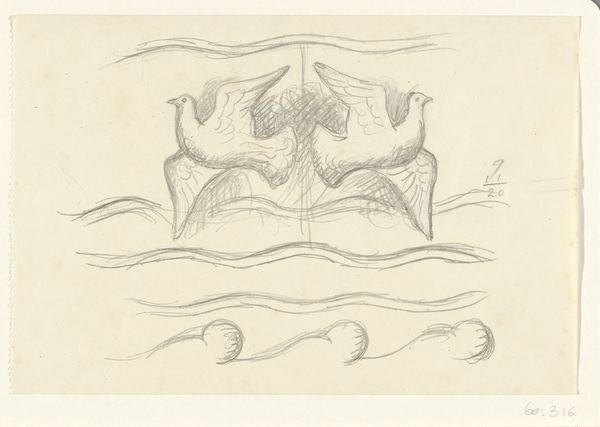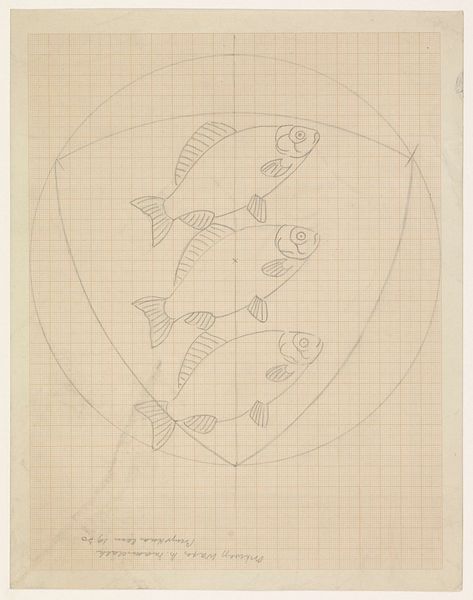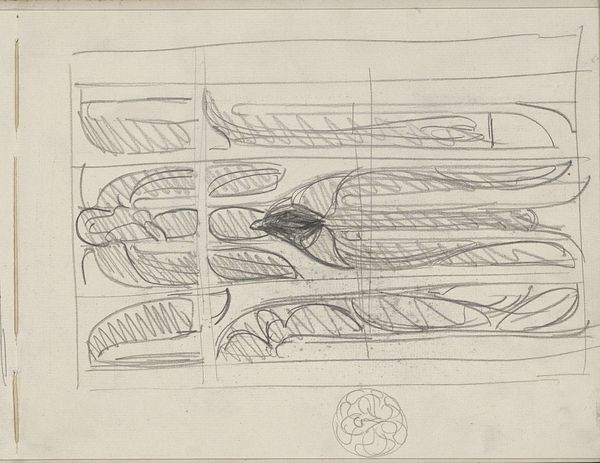
drawing, ornament, paper, pencil
#
drawing
#
ornament
#
art-nouveau
#
paper
#
geometric
#
pencil
#
line
Dimensions: height 106 mm, width 142 mm
Copyright: Rijks Museum: Open Domain
Curator: We're looking at "Ornament met kruisende lijnen," which translates to "Ornament with Crossing Lines." It’s a pencil drawing on paper, made sometime between 1884 and 1952 by Reinier Willem Petrus de Vries. Editor: It has such an ephemeral quality! The sparse lines and dots on the page suggest a structure that's both solid and airy. I'm struck by the economy of means used to evoke this…almost shell-like form. Curator: Exactly! This was created during a period when Art Nouveau was prominent, which heavily valued ornamentation. While we appreciate this piece today as a work of art, at the time it would have likely served a much more utilitarian purpose—functioning as a blueprint or concept for furniture design, ironwork, or perhaps even architectural detail. Editor: The means of production are really interesting here, aren’t they? It's a relatively humble material, paper, and a pencil, yet the execution is so precise. You see the labor in the hatching marks where he was searching to fill a void or construct something three dimensional out of a 2-D space. Curator: Precisely. What I also find interesting is the contrast between the apparent simplicity of the drawing and the highly stylized movement of Art Nouveau. De Vries is really thinking about the socio-political forces of how industry changed the art, forcing a need for highly stylized but readily producible works. The artist probably viewed the use of repeated ornamental work to define or highlight social progress. Editor: The symmetry and repetition give a rhythm to the piece. One could definitely trace how this design aesthetic becomes mass produced, yet somehow manages to maintain some level of artistic integrity due to the time constraints and means necessary. Curator: Agreed. The piece gives us a fascinating peek into the workflow of early twentieth-century design—a time when mass production started blurring the lines between fine art, craft, and the culture around it. Editor: Ultimately, this humble drawing, likely intended as just a step in the production chain, is a testament to both artistic vision and industrial possibility. It underscores how art serves cultural needs as much as any abstract pursuit.
Comments
No comments
Be the first to comment and join the conversation on the ultimate creative platform.
